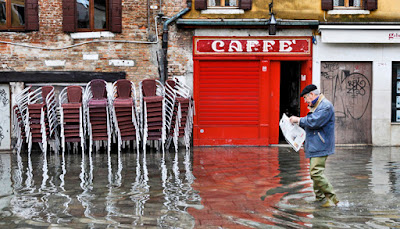COST OF COASTAL FLOODING EXPECTED TO SURGE
Seaside areas worldwide may face huge increases in problems from tornado rise swamping throughout the 21st century if no activity is taken, scientists say.
A brand-new study shows that average problems could increase from about $10 to $40 billion annually today to up to $100,000 billion annually by completion of century.
bermain dan dapatkan banyak keuntungan/
[related]
Released in the Procedures of the Nationwide Academy of Sciences, the study provides among the first extensive global simulation outcomes on future flooding problems to structures and facilities in seaside flooding plains.
Extreme increases in these problems are expected because of both rising sea degrees and populace and financial development in the seaside area. Australia or europe and Africa may be especially hard hit because of their quickly expanding seaside mega-cities, such as Shanghai, Manila, and Lagos.
"If we disregard this problem, the repercussions will be remarkable," says Jochen Hinkel from the Global Environment Online discussion forum and the study's lead writer.
600 MILLION PEOPLE AFFECTED
In 2100, up to 600 million individuals (about 5 percent of the global populace) could be affected by seaside swamping if no adjustment measures are implemented.
"Nations need to act and spend in seaside protection measures, such as building or increasing dikes, among various other options," Hinkel says. With such protection measures, the forecasted problems could be decreased to listed below $80 billion annually throughout the 21st century.
The scientists say a financial investment degree of $10 to $70 billion annually could accomplish such a decrease. Prompt activity is needed most in Australia or europe and Africa where, today, large components of the seaside populace are currently affected by tornado rise swamping.
However, financial investment must also occur in Europe as revealed by the current seaside floodings in Southern West England.
"If we disregard sea-level rise, flooding problems will gradually rise and currently great defenses will be degraded and eventually overwhelmed," says co-author Robert Nicholls, teacher of seaside design at the College of Southampton. "Hence we must begin to adjust currently, be that planning greater defenses, flooding proofing structures, and tactically planning seaside land use."
SHORT-TERM INTERESTS
Meeting the challenge of adjusting to rising sea degrees will not be easy, Hinkel says."Bad nations and greatly affected small-island specifies are unable to earn the necessary financial investments alone, they need worldwide support."
Including to the challenge, worldwide finance systems have so far proved slow in mobilizing funds for adjusting to environment change, as the debate on adjustment financing at the current environment conference in Warsaw once again verified.
"If we don't decrease greenhouse gases quickly and significantly, some areas will need to seriously consider relocating considerable varieties of individuals in the much longer run," Hinkel says.
Yet no matter of how a lot sea-level rise environment change brings, careful long-lasting tactical planning can ensure that development in high-risk flooding areas is appropriately designed or avoided, Nicholls says.



